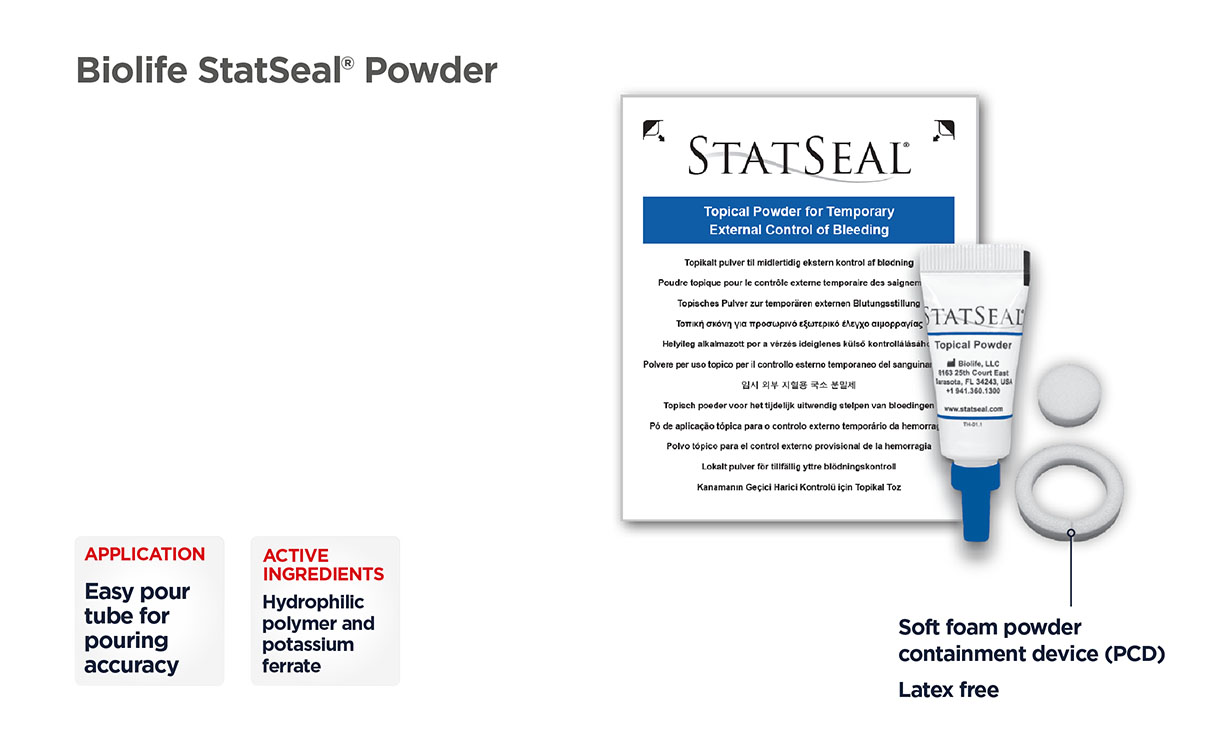
Biolife StatSeal® Powder
For the temporary external control of bleeding from indwelling catheters and procedural sites use StatSeal® Powder.

For the temporary external control of bleeding from indwelling catheters and procedural sites use StatSeal® Powder.

Angela Hastings and Andrew Barton.
British Journal of Nursing, 2024;33(14)
StatSeal products are comprised of a hydrophilic polymer and potassium ferrate. As a manual pressure adjunct, StatSeal’s mechanism of action is two-step and occurs simultaneously to instantly form a low pH occlusive seal that acts as a physical barrier over the wound site, letting nothing in or out. The hydrophilic polymer rapidly dehydrates the blood and absorbs exudate, stacking up desiccated blood solids beneath to form a seal. The potassium ferrate binds the blood solids and proteins together, adhering the seal to the wound to stop bleeding and oozing. Beneath the seal the pH is neutral, and the blood solids and proteins continue to stack naturally. Above the seal, the hydrophilic polymer has a pH of 2 which creates a hostile barrier to microbial penetration.1,3
References: [1] Biolife, LLC, 510(k) K080210, Section 18.3. [2] Wilder KA, Wall B, Haggard D, Epperson T. CLABSI Reduction Strategy: A Systematic Central Line Quality Improvement Initiative Integrating Line-Rounding Principles and a Team Approach. Adv Neonatal Care. 2016 Jun;16(3):170-7. [3] Blough L, Hinson K, Hen J. The science of a seal for PICC line management: bio seal CVC powder. J VAS Access. 2010;15(2):66-73. [4] Ayala, M. PICC Insertion Dressing Protocol for the Hematological Oncology Patient: A Comparison of Biopatch and StatSeal. Poster presented at AVA Annual Meeting; October 4-7, 2019; Las Vegas, NV.